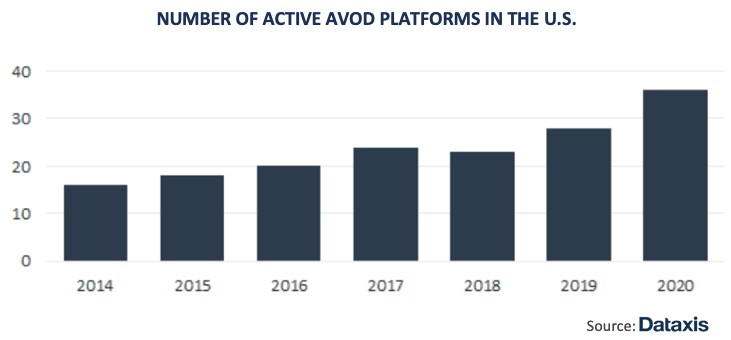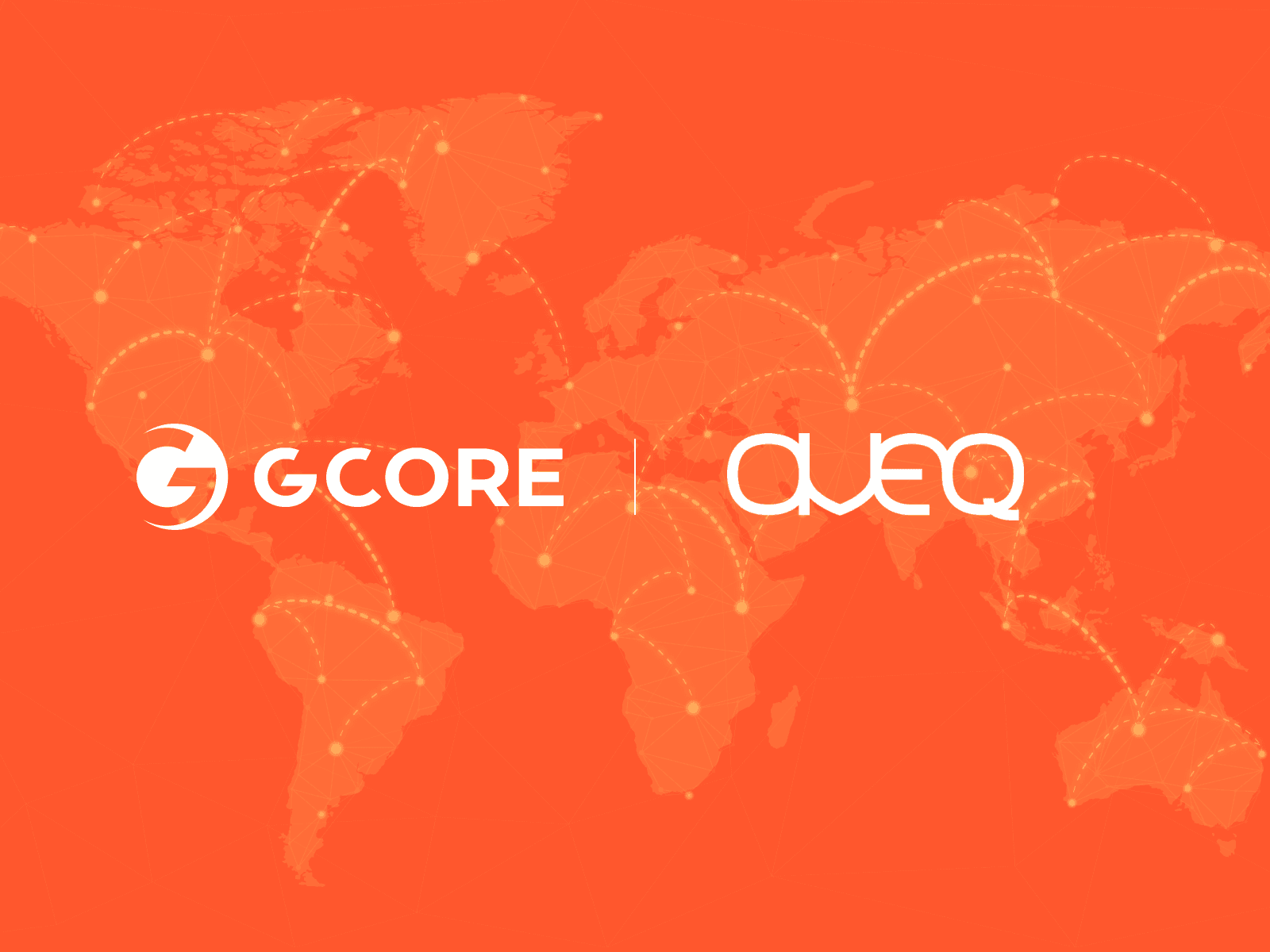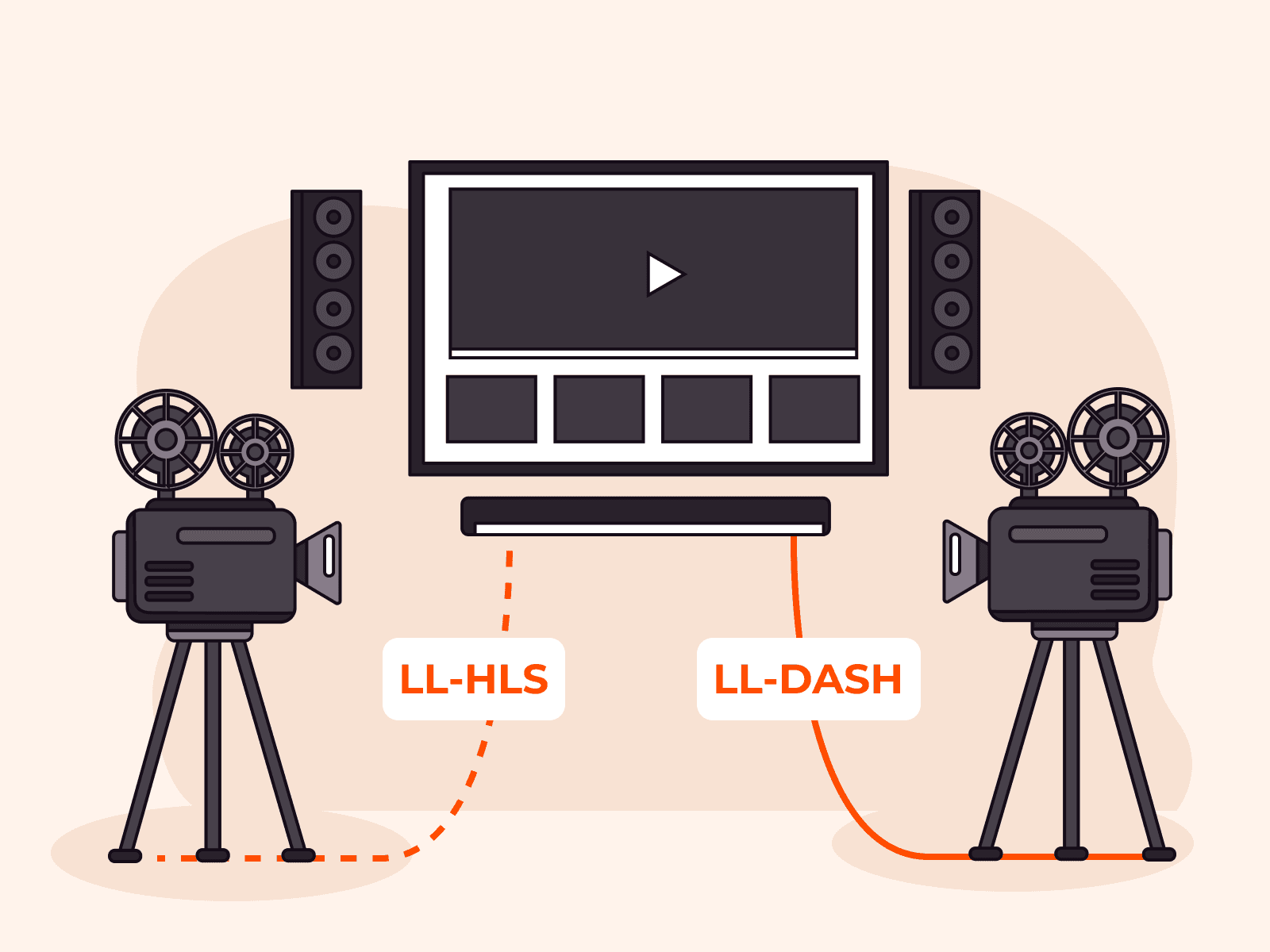How to monetize video content in 2021
- September 2, 2021
- 11 min read

Every day we consume tons of content. According to DoubleVerify research, the average amount of time users spend browsing information online doubled in 2020.

The same research has shown that the audience of such corporations as Netflix, Disney+, and YouTube grew by 40–50% during the last year.
Video content manufacturers are having their good times now. And a growing audience provides an opportunity to earn more money.
In this article, we will focus on how to monetize video content in 2021 effectively.
Main content monetization techniques
There are many ways of earning money from your content:
- Paid access (SVOD, TVOD, EST, PVOD)
- Advertising (AVOD, BVOD)
- Paid high quality content (4K/8K, AR, 360°)
- Native and integrated advertising, sponsorship
- Creating videos on request
Each of these models has its high and low points as well as some peculiarities. Choosing which technique to use depends largely on the needs of your project.
Let us discuss two most popular methods—paid access and advertising.
Monetization through advertising
According to a Dataxis research, the number of video content platforms using advertising is growing every year.

The main advantage of this technique for the viewers is evident: users don’t have to pay for the opportunity to watch the content. This creates further advantages:
- Such video content spreads easier. Any of your viewers can share a link to your video and increase your audience.
- If you select relevant advertising and insert it in your content properly, ads can even be useful to your viewers.
The key disadvantages:
- Users dislike advertising. If there are too many ads in your videos, or if these ads are irrelevant, this will influence user experience negatively.
- Ads get blocked by Adblock. According to Backlinko, 42.7% internet users all over the world use ad blocking software.

The key point to consider when opting for the advertising model is that it only fits channels with a large audience. The more people watch your video content, the more attractive your channel is for advertisers.
When you start your project, no ads are needed. Once you’ve attracted enough viewers, you can start using monetization techniques. If you manage to create a large audience and to insert relevant advertising in your content, your initial spending will be justified.
The most important question is: how to integrate relevant advertising in your content to make the model work well? How to make this integration bring profit to both you and your advertisers and to prevent your users from getting annoyed by the ads? Let’s take a deeper look into it.
How to insert ads effectively?
This issue needs to be examined from the viewpoint of marketing as well as from the technical point of view.
From the viewpoint of marketing, the first thing to consider is whether the advertising is organically connected with your content and meets the needs of your target audience.
If you mainly focus on sporting events, advertising women’s cosmetics during your live broadcasts is hardly going to be relevant.
Analyzing the structure of your target audience and choosing the ads that will be interesting to your viewers requires professional marketing experts’ advice.
It’s not only your content topics that matter. Even the minutest details may turn out to be very effective:
- In which part of the video the ads appear
- How long the ads last
- How many ads there are in one video
- How ads are integrated into the video and whether they interrupt people mid-sentence
- Whether the client can interact with the video (e.g., skip the ad or visit the advertiser’s website by clicking on the ad)
All these aspects need to be considered and tested. You should check the reaction of your viewers to different approaches and opt for the most effective ones.
This is where technical issues become important. Use the technologies that make it possible to implement different ad insertion techniques and analyze their effectiveness.
Let’s discuss two ad insertion methods: AVOD and BVOD.
AVOD (Advertising VOD) implies inserting ads while the video is playing.
There are four ways of inserting ads into in a video:
- Pre-roll—ads starting before the video
- Mid-roll—ads starting at a certain time after the beginning of the video
- Pause-roll—ads starting when the video is paused
- Post-roll—ads starting in the end of the video

You can use VAST/VPAID protocols to make ads visible to users.
VAST is a protocol allowing the video player to launch ads at certain times during the video.
VAST makes the video player fulfill certain instructions and decide:
- Which ad needs to be integrated into the video
- How the ad will be shown
- How long an advertising break is supposed to last
- Whether the user can visit the advertiser’s website by clicking on the ad and where exactly the user will be redirected
- Whether the user can skip the integrated ad
VPAID is another advertising protocol allowing you to specify the rules for the video player to follow when showing ad blocks. Its main distinction from VAST consists in its ability to show interactive ads and record the audience’s reaction to the ads.
VPAID provides statistical data allowing you to estimate ads effectiveness.
This protocol allows you to insert ad blocks users are able not only view but also interact with in the following ways:
- Click on different buttons to see more information
- Fill in a form included in the ad (e.g., leave your contacts)
- Participate in a poll contained in the ad block
- Interact with different elements or even play a game
At the same time, this protocol monitors users’ actions allowing you to gather detailed statistical data, test different approaches, and make conclusions concerning the effectiveness of the ads integrated into your videos.
BVOD (Broadcaster VOD) is a variation of AVOD used by TV channels broadcasting TV shows with ads.
It gives you the opportunity to watch TV shows later, rewind the broadcast, and watch extra materials not included in the main content body.
The ad’s position in such videos can be specified using special SCTE-35 marks in the video stream or using the chunk schedule (chunks are short segments that videos are divided into in order to speed up content delivery).
All these technologies make it possible to specify the ad’s position in the video stream, track user interaction with the ad, receive statistical information, and make conclusions concerning the effectiveness of the ad integrated into your video. Yet they fail to solve another pool of tasks that need to be fulfilled in terms of effective ad insertion:
- Balancing ad quality with video quality
- Avoiding buffering while the ad block is playing
- Avoiding delays when ads are inserted in live broadcasts
- Preventing ads from being blocked by Adblock
There is a technology that is capable of solving all these problems. It is called Server-Side Ad Insertion.
Server-Side Ad Insertion
There are two opposite technologies: Client-Side Ad Insertion and Server-Side Ad Insertion.
Client-Side Ad Insertion implies that when the player decides that it’s time to show advertising, it stops the main video, sends a request to the server where the ad is stored, receives the ad and shows it.
Server-Side Ad Insertion (SSAI) merges the video content and the ad to form an inseparable video stream.
To use SSAI you need an intermediate server that will retrieve ads from the ads server and insert them in the main video. The ad block positions need to be specified in advance, and the server inserts them in the video before the content is delivered to the user.
The ad format in this case is changed to fit the video format. The ad is divided into small segments to speed up its delivery to the user.

SSAI advantages:
- Ads are delivered to the user together with the content, and there is no need to interrupt the main video in order to request the ad block from the server. This helps avoid buffering.
- SSAI uses the adaptive bitrate streaming technique: the video quality is changed depending on the user’s device characteristics and on the Internet connection quality available. Buffering can be avoided even in case of poor Internet connection.
- Both the ad block and the main video are divided into segments, which speeds up content delivery to the user and makes it possible to avoid delays during live broadcasts.
- The SSAI’s greatest advantage is that it makes Adblock perceive ads as part of the video stream. As a result, ads aren’t blocked.

Yet there is one important detail to consider: this technology requires high computer performance. It is necessary to retrieve the ad from the server, transcode it for the purpose of making it meet the necessary formats, integrate it into the video, divide it into segments, and deliver it to the user. And all this needs to be done fast and without any delays.
This is why using this ad insertion technology requires a high-capacity server.
How to integrate ad insertion technologies into your website
We’ve enlisted quite a number of effective technological solutions. Integrating them into your website on your own and making your website work properly and without delays is a challenging, time- and money-consuming task.
Yet there is a faster and cheaper solution to this problem—using an advanced streaming platform.
A streaming platform is a special service using a set of technical solutions that allow you to deliver your video content to the users.
There are many types of such platforms, and all of them feature different functions. Some streaming platforms present a complex service where the platform provider takes on the whole broadcasting process from video capture to playing the video on the users’ devices. Other streaming platforms allow you only to upload your content and deliver it to your users.
Some platforms can be used as a single service only. Other solutions can be fully integrated into your website.
Gcore Streaming Platform is a complex solution for live broadcasting as well as for videos shown on request. We provide turnkey video streaming services that can be fully integrated into your website.
We offer stable streaming solutions and can integrate broadcasts and video calls into our clients’ services. Our portfolio features even a telemedicine platform developed for the Duchy of Luxembourg. You can view all examples of our work in the Case Studies section of our website.
As for the advertising tools, our platform supports all the technologies mentioned above.
It will allow you to easily upload videos with ads and deliver your content to millions of users with the video quality being up to 8K.
Paid video content access
This model can be implemented in many different ways. You can sell one-time access to certain videos, provide monthly or yearly subscriptions, or publish additional materials with paid access (for example, you can provide a free live broadcast of some event and then sell its recorded copies).
Subscription
SVOD (Subscription Video On Demand) is rapidly growing in popularity now. In the last 10 years the total revenue of subscription business has grown by 437%. This result is significantly greater than that of other sales models.

Subscriptions are offered by many industry giants including Netflix, Disney+, HBO Max, etc. This business brings the companies immense profits.
For example, in the first quarter of 2021 Disney+ brought the Disney company $2 billion, which is 4 times as much as in the first quarter of 2020. By March 2021, the number of their subscribers reached 100 million.
The company’s equally successful competitor Netflix had 193 million subscribers in July 2020. Public reports show that in the recent years the company’s profits have been boosting.
The key advantages of video content subscription are as follows:
- You regularly receive pretty large sums. The users have to pay monthly or yearly fees in advance. This model helps you keep your audience with you. If the users like your content, they are more likely to prolong subscription again and again.
- Subscription is convenient and, in many cases, profitable for the users. They don’t need to pay every time when they want to watch a video. And if they watch your content regularly, this scheme appears to be money-saving for them.
Yet this model isn’t deprived of some drawbacks:
- Not everyone is ready to pay for a month in advance. Some users are eager to watch some of your videos but aren’t planning to do it regularly, which makes subscription useless to them. You’d better provide an opportunity of one-time paid access for such cases.
- This model is suitable for you only if you generate plenty of content on a regular basis. If you publish a couple of videos every month, your users will have nothing to watch most of the time and, hence, nothing to pay for.
Buying or renting video content
If you don’t generate video content on a regular basis but want to earn from it, opt for one-time paid access.
You can opt for TVOD (Transactional Video On Demand). This technology implies renting videos, with the users getting paid access to your content for a limited period of time and being able to watch it a limited number of times. Alternatively, you can use EST (Electronic Sell-Through), which implies selling videos and giving your users full access to them without any time and viewing limits.
Early access to premium content
Another model is called PVOD (Premium Video On Demand). It implies providing paid access to your content allowing one to watch the videos earlier than everyone else.
This method is usually used together with SVOD, TVOD, or with the advertising model. The Mulan movie recently produced by Disney+ is a typical PVOD example. To watch it on the first days after the release, the users needed not only to buy subscription but also to pay an additional fee making up about $25.
Key points to consider when opting for the paid access model
1. Your video content must be unique, interesting, and useful. It is very important for the users not to be able to find a free analog of your content.
According to a poll conducted by the Digiday online magazine, 43% of video content producers believe that creating a product the audience will be ready to pay for is the most difficult task when opting for the paid model.
News is a typical content type that users are hardly ever ready to pay for. Many mass media opt for the advertising model instead of paid subscription because their audience can easily find other sources of information that are completely free.
Specialized periodicals publishing reports with exclusive expert comments, research, and other similar things are the only exception from this rule. In such cases, the subscription model can be used.
The New York Times is one of such publications. You can read some articles on their website for free but if you need access to the core materials, you’ll have to pay for it.

2. All technical issues need thorough consideration. How are your users going to pay for the access to your content? How are you going to track the payments received?
The payment system must be well-designed and convenient for your clients.
3. Your content needs efficient protection against illegal copying.
If malicious users steal your content and publish it online, you are at risk of losing the greatest part of your profit.
Using reliable protection is a must. In our blog, you can read an article on how to effectively protect your video content.
Gcore Streaming Platform can differentiate video access rights for different viewers and check if their payments have been received. Before showing a video to the user, the system requests your app for the information on whether the payment has been received, and either allows or blocks the video depending on the response.
We can protect your content against unauthorized user access and illegal copying. Our platform meets all modern safety standards:
- AES 128/256 encryption protects your video while it is being delivered to the users.
- Single-use signed URLs are generated to provide access to your content. This helps avoid unauthorized user access to live broadcasts and protect your videos against illegal copying.
- CORS is a technology allowing you to restrict the number of domains having access to your website. Your content will be unavailable for anybody except the domains specified.
- DRM is a system complex defining content access rights. It ensures one of the highest protection levels for your content.
Complex approach to monetization
We’ve discussed different approaches to content monetization, yet these solutions can be combined in one. You can give your users free access to videos with ads, and if they don’t want to get distracted by advertising, they can opt for a paid subscription and watch your content without it.
This method is currently used by YouTube. This website offers paid Premium subscription allowing its users to watch videos without ads.
This method can be pretty effective. A Deloitte research has shown that 40% of users are ready to pay subscription fees in order to watch videos without ads.

This model is very convenient for content producers. You earn money from the users who are ready to pay subscription fees and show ads to those who aren’t.
This approach is a client-oriented one because you offer your users to make a choice on their own.
Conclusions
- There are many ways of monetizing video content, with paid access and ads being two of the most widespread models.
- The advertising model is a popular and effective monetization method. Yet to make it work properly you need to insert ads in your videos properly, try different approaches, and analyze their effectiveness.
- You can set rules concerning the ads position in the video and the ways your clients can interact with the ads. You can gather statistics using the VAST/VPAID protocols.
- Seamless ad insertion is possible if you use the Server-Side Ad Insertion technology. It solves many technical issues connected with the ad insertion process including disabling Adblock.
- Paid access to video content is also an efficient monetization technique. Today’s most popular model is subscription. It is used by such industry leaders as Netflix, HBO Max, Disney+, and others. Yet the paid access model only fits those who offer unique content having no free analogs.
- Two monetization models can be combined in one: you can show video content for free with ads and offer paid access without ads. This model is also very effective.
- To make your monetization model work, you need to protect your content from illegal copying. If you opt for the advertising model, you need to thoroughly consider the technical issues connected with ad insertion.
- Gcore Streaming Platform provides both reliable content protection and effective ad insertion solutions. We use all advanced streaming and content monetization technologies. We will deliver your video content to the viewers safely and with the shortest delays possible—not more than 4 seconds.
Get more information about Streaming Platform on our website or schedule a free consultation with one of our managers to choose a plan that suits your goals best.
You can test our platform for free to make sure that it fits your project needs.
Related articles
Subscribe to our newsletter
Get the latest industry trends, exclusive insights, and Gcore updates delivered straight to your inbox.






